WWII "OWI leaflet 2007" Pacific Theater Surrender Leaflet Dropped on Japanese*

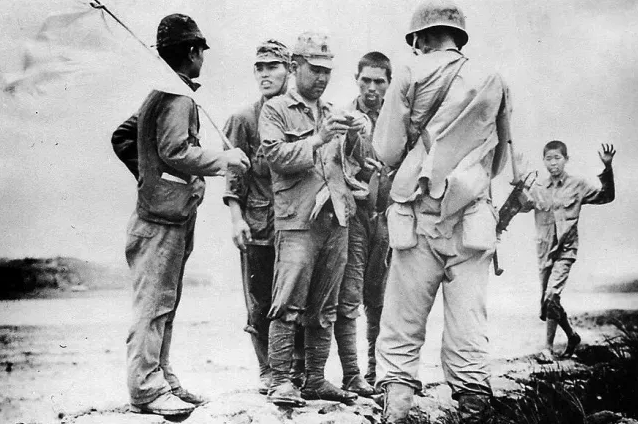
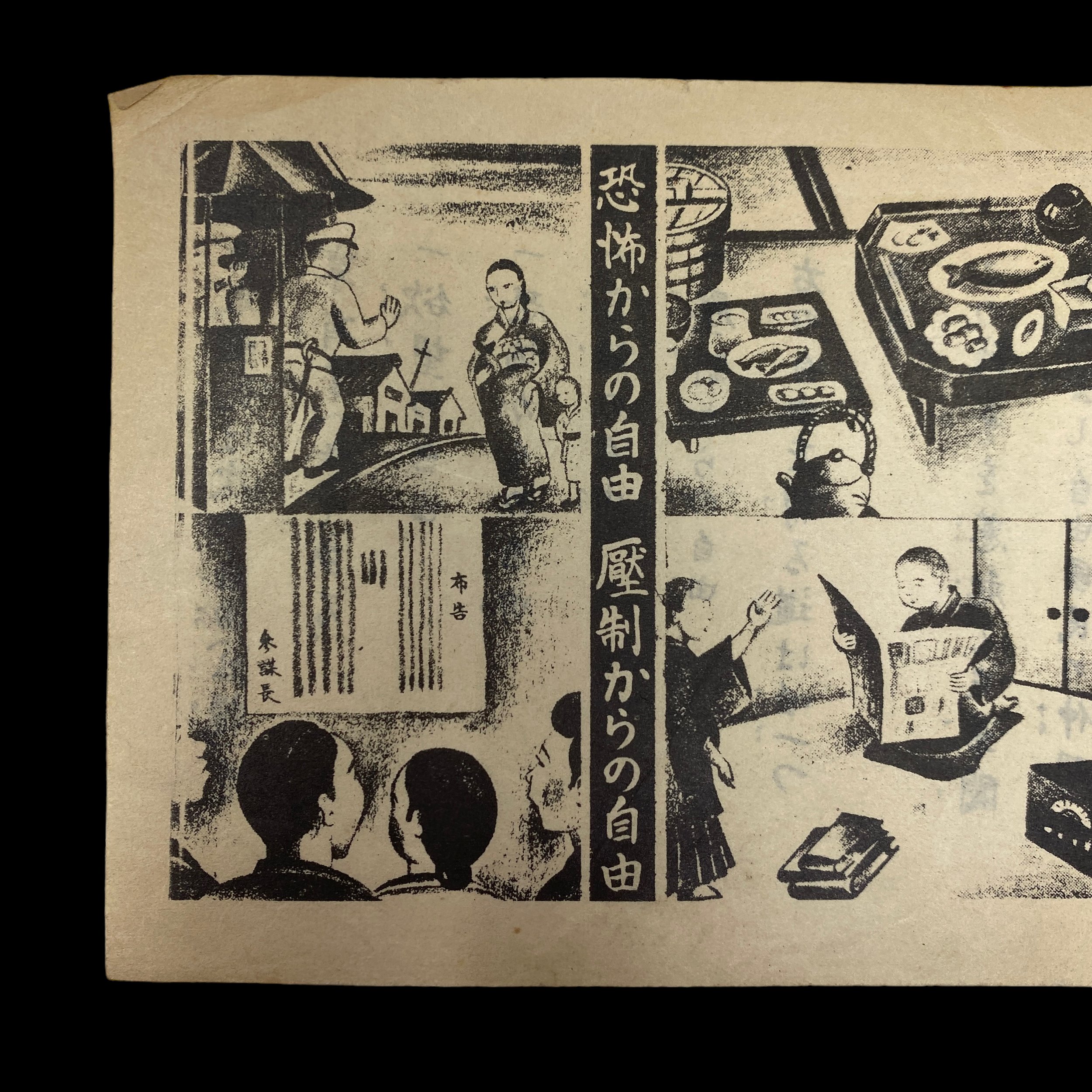

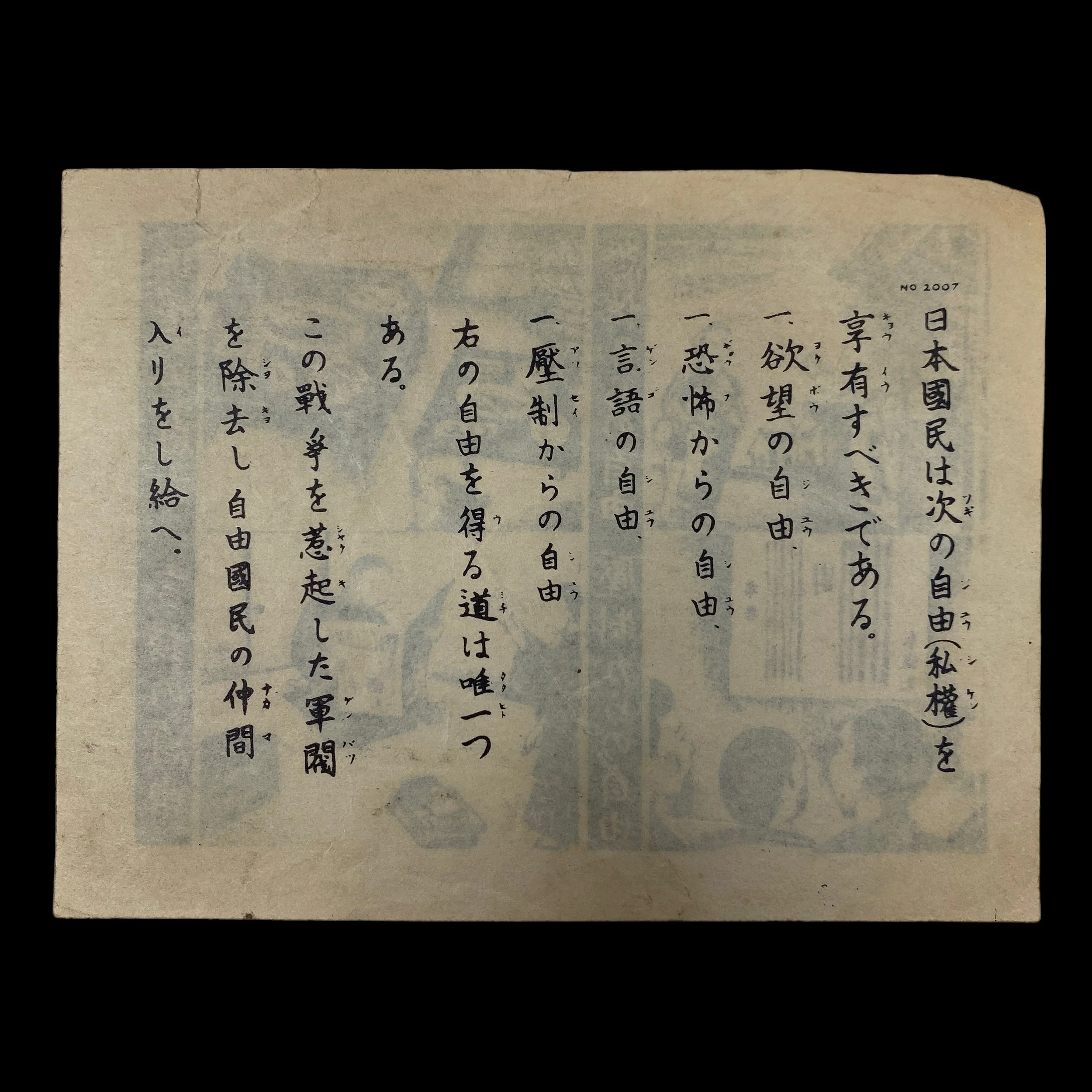
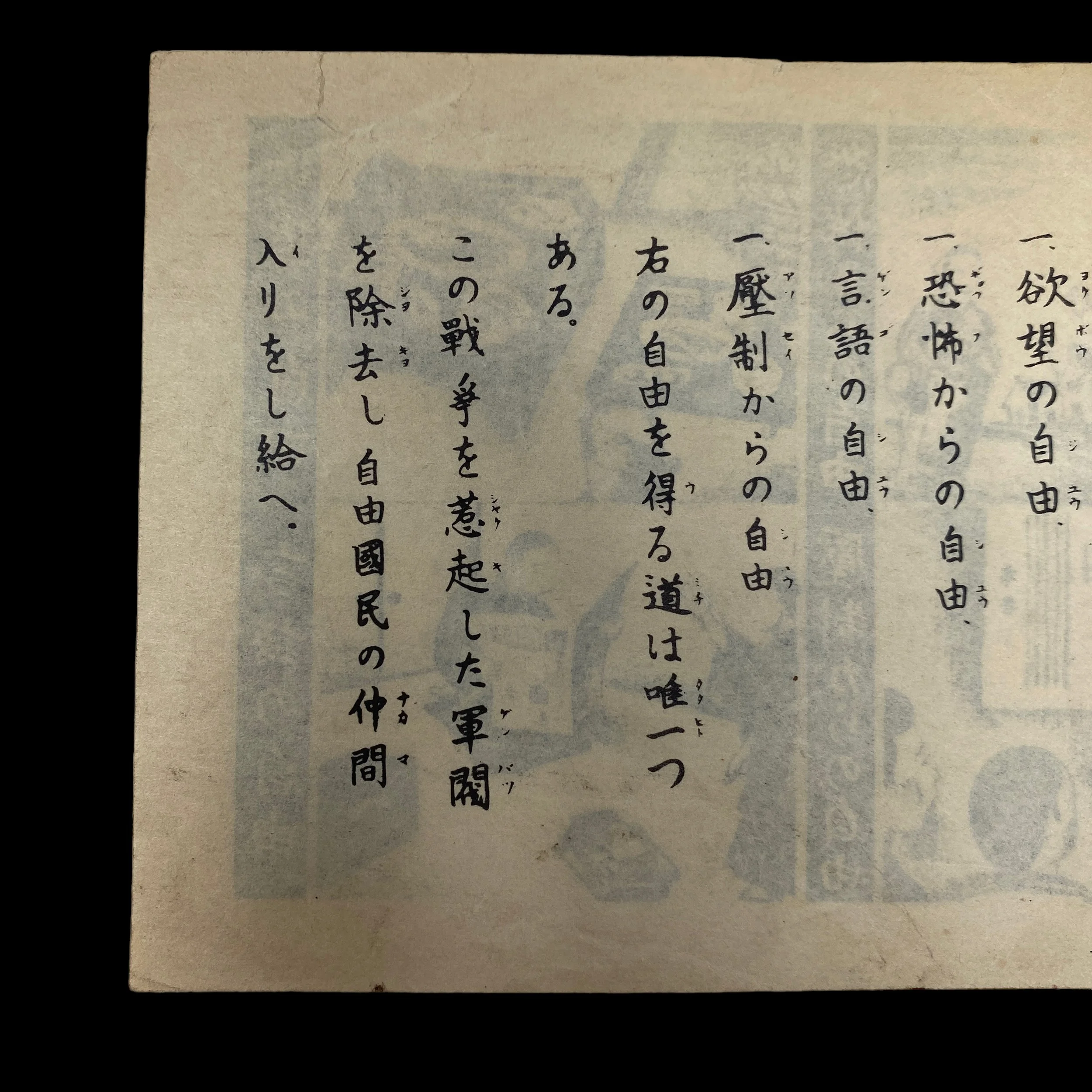
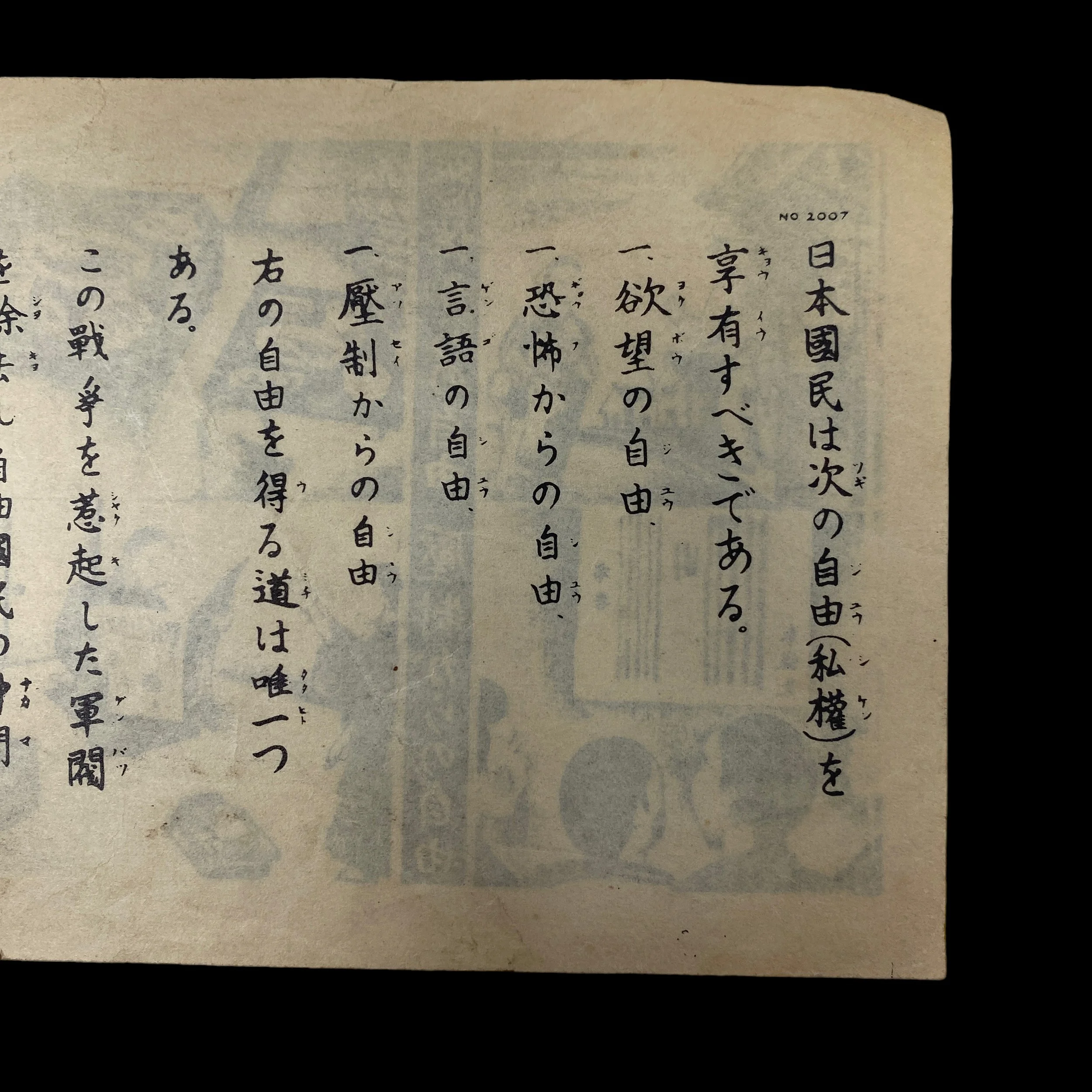
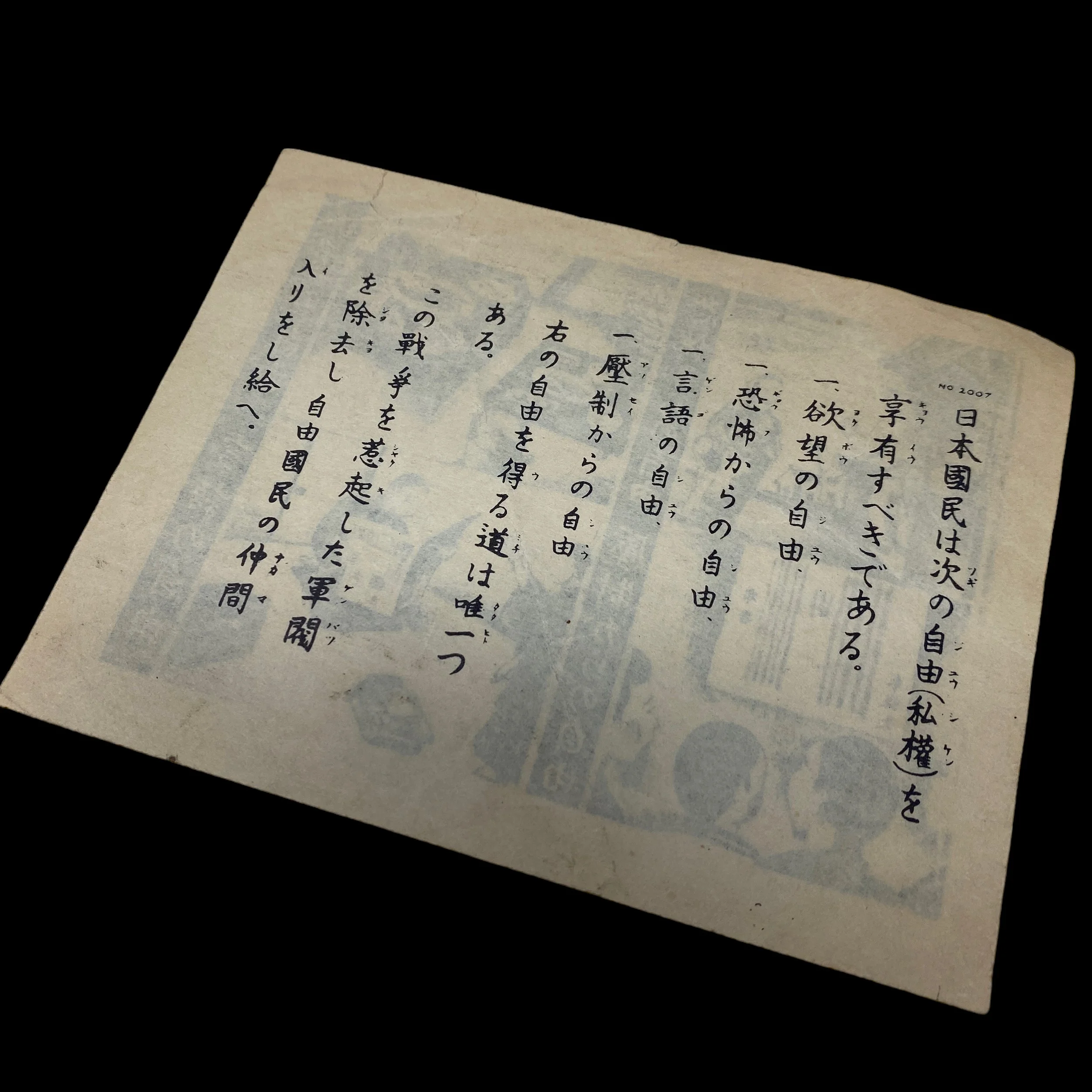
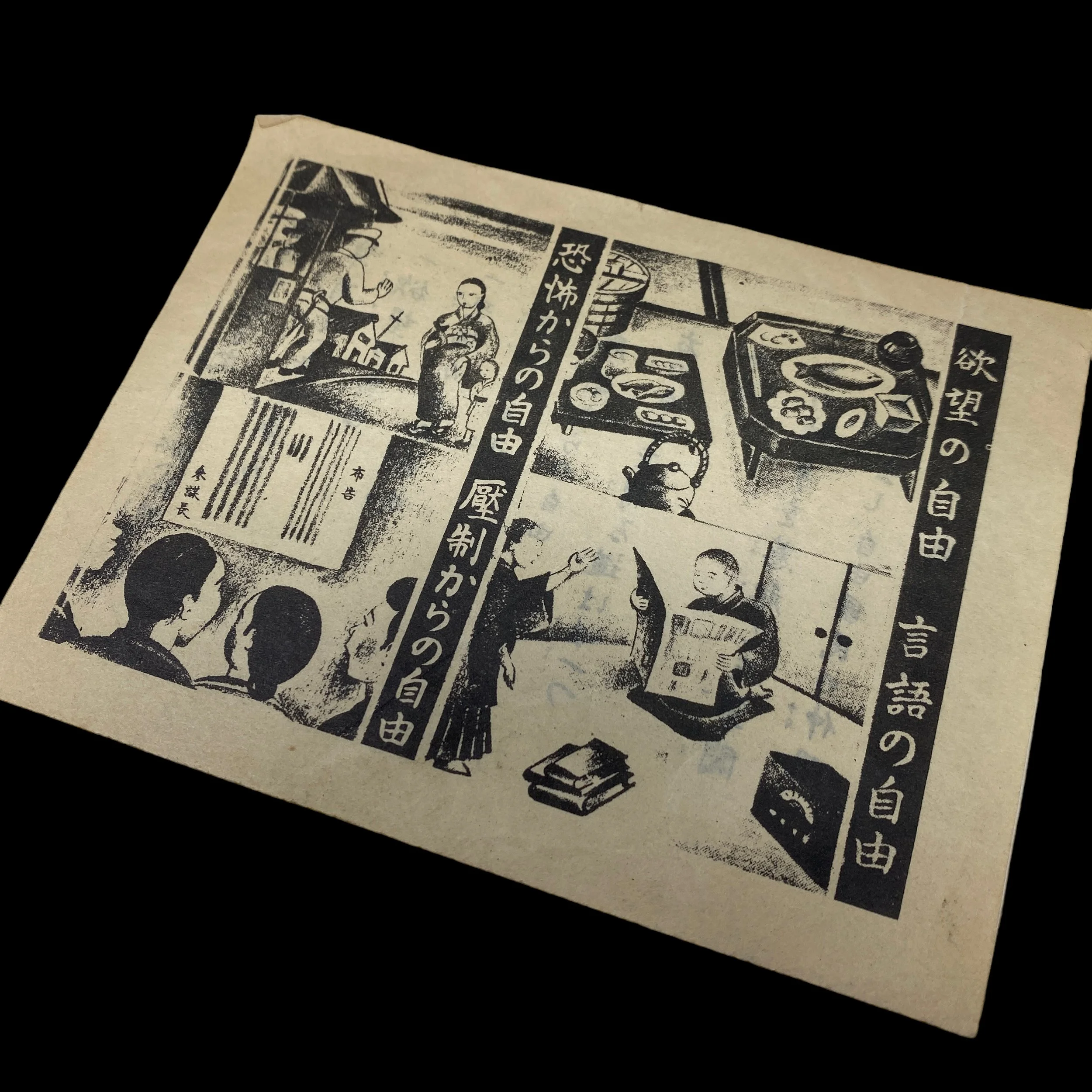
WWII "OWI leaflet 2007" Pacific Theater Surrender Leaflet Dropped on Japanese*
Comes with hand-signed C.O.A.
This original WWII surrender leaflet was dropped on a Japanese in the Pacific. This original leaflet is in near-mint condition given its age.
OWI leaflet 2007
This leaflet is intended to cause distrust between the people and the militarists. There are four images on the leaflet; each depicting a freedom that every Japanese citizen should have: the freedom from want, the freedom from fear, the freedom of speech and the freedom from oppression. The above leaflet is on a crème-colored paper; my own specimens are printed in brown on a green paper. The text on the back says in part:
There is only one way to attain the freedoms. Do away with the Gumbatsu who brought about this war and join the free nations.
World War II was a global conflict that engulfed nations on nearly every continent. While the war in Europe is often the focus of historical discussions, the Pacific Theater was equally significant. In the Pacific, Allied forces faced the formidable Japanese Empire, and the use of surrender and safe conduct passes played a crucial role in diplomatic and tactical efforts.
To understand the significance of surrender and safe conduct passes in the Pacific Theater during World War II, it is important to consider the broader historical context. Japan's imperial ambitions, expansionist policies, and aggressive military actions in the years leading up to the war set the stage for the conflict. The Japanese Empire had conquered large swathes of territory across Asia and the Pacific, including China, Korea, Southeast Asia, and parts of the Pacific Islands.
As Allied forces began their counteroffensive against Japan, they faced the challenge of dealing with a highly militaristic society that placed great value on honor and death before surrender. This cultural backdrop significantly influenced the strategies employed by the Allies in the Pacific.
Surrender and safe conduct passes were tools used by the Allied forces to encourage Japanese soldiers and civilians to surrender. These passes came in various forms, including printed leaflets, official documents, and verbal assurances. They typically contained messages designed to persuade Japanese soldiers and civilians that surrendering to the Allies was not only a viable option but also a humane one.
Psychological warfare played a crucial role in the Pacific Theater. The passes contained messages that emphasized the futility of resistance, the safety of surrender, and the humane treatment that would be afforded to those who surrendered. They often portrayed the Allies as liberators rather than conquerors.
For instance, some passes promised food, medical care, and shelter to those who surrendered. Others highlighted Japan's isolation and painted a picture of a lost cause. These psychological tactics aimed to break down the resolve of Japanese soldiers and civilians, encouraging them to choose surrender over continued resistance.
Safe conduct passes were also used strategically to gather intelligence. Japanese soldiers or civilians who surrendered with these passes were often debriefed by Allied intelligence officers. This allowed the Allies to gain valuable information about Japanese positions, troop movements, and other military matters. It was a way to exploit the psychological vulnerability of individuals who had decided to surrender.
Surrender and safe conduct passes played a significant role in several major Pacific campaigns. Here are a few examples:
Guadalcanal:
During the Guadalcanal campaign in 1942-1943, Allied forces employed surrender passes to encourage Japanese soldiers on the island to surrender rather than engage in futile combat. These passes emphasized the dire situation of Japanese forces and the safety of surrendering to the Allies. The success of this campaign marked a turning point in the Pacific War.
Iwo Jima:
In the Battle of Iwo Jima in 1945, Allied forces made extensive use of surrender and safe conduct passes. Given the island's strategic importance and the tenacity of Japanese defenders, these passes were crucial in convincing some Japanese soldiers to surrender, thereby reducing casualties on both sides.
Okinawa:
During the Battle of Okinawa, which was one of the bloodiest battles in the Pacific, the use of surrender passes was instrumental in persuading thousands of Japanese soldiers and civilians to surrender. The passes highlighted the dire situation, assured safety, and promised humane treatment.
Understanding Japanese culture was essential when creating surrender and safe conduct passes. The Allied forces had to be culturally sensitive in their messaging, taking into account the deeply ingrained notions of honor and shame in Japanese society. Passes had to be translated accurately and with cultural nuance to resonate with the target audience. The Allies also utilized Japanese prisoners of war who spoke English to help with translations and negotiations during surrender processes.
In the Pacific Theater during World War II, surrender and safe conduct passes served as powerful diplomatic and tactical tools against the Japanese. They employed psychological warfare to convince Japanese soldiers and civilians that surrendering to the Allies was a humane and sensible choice. These passes played a significant role in major Pacific campaigns, contributing to the eventual Allied victory.